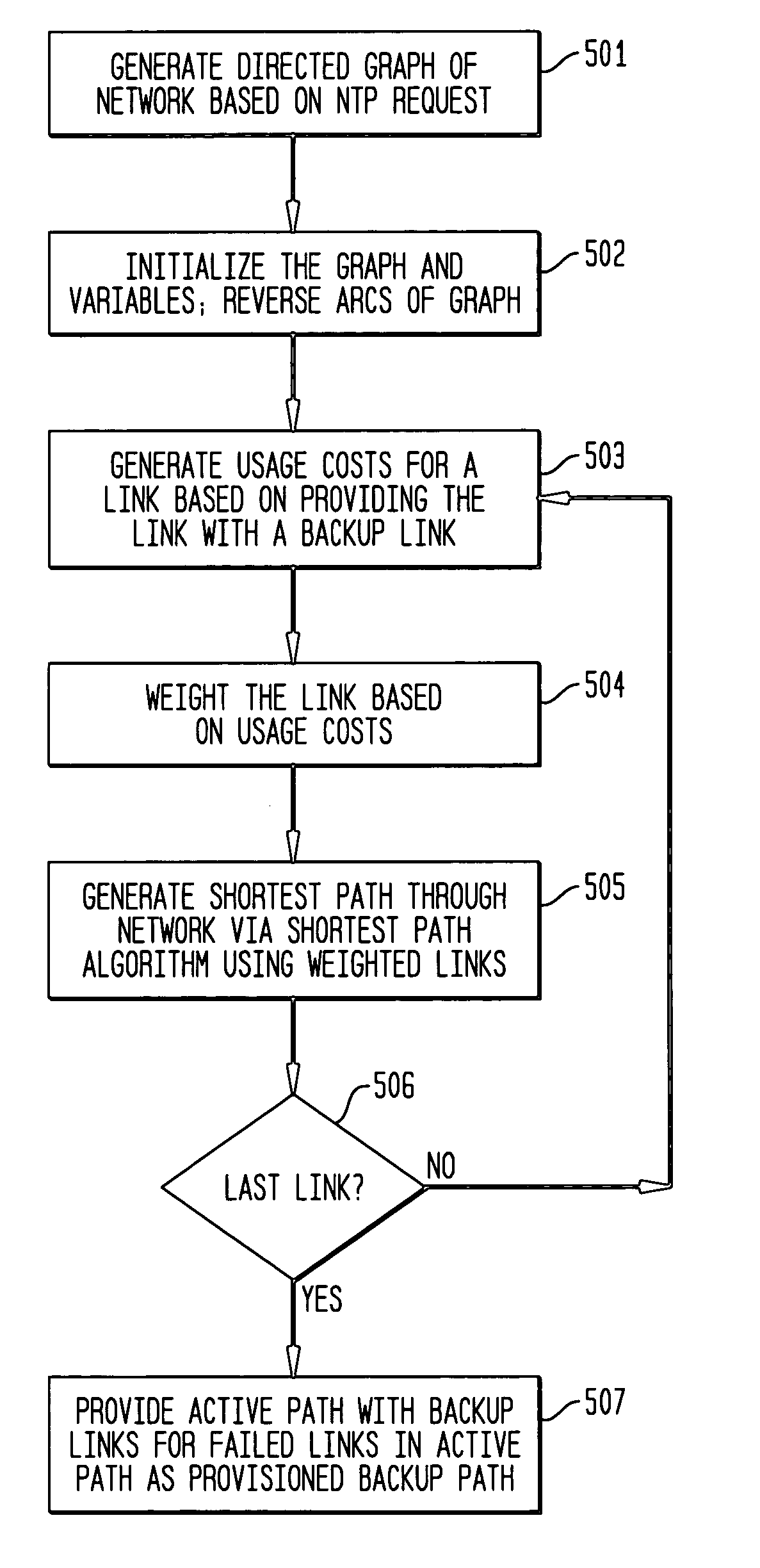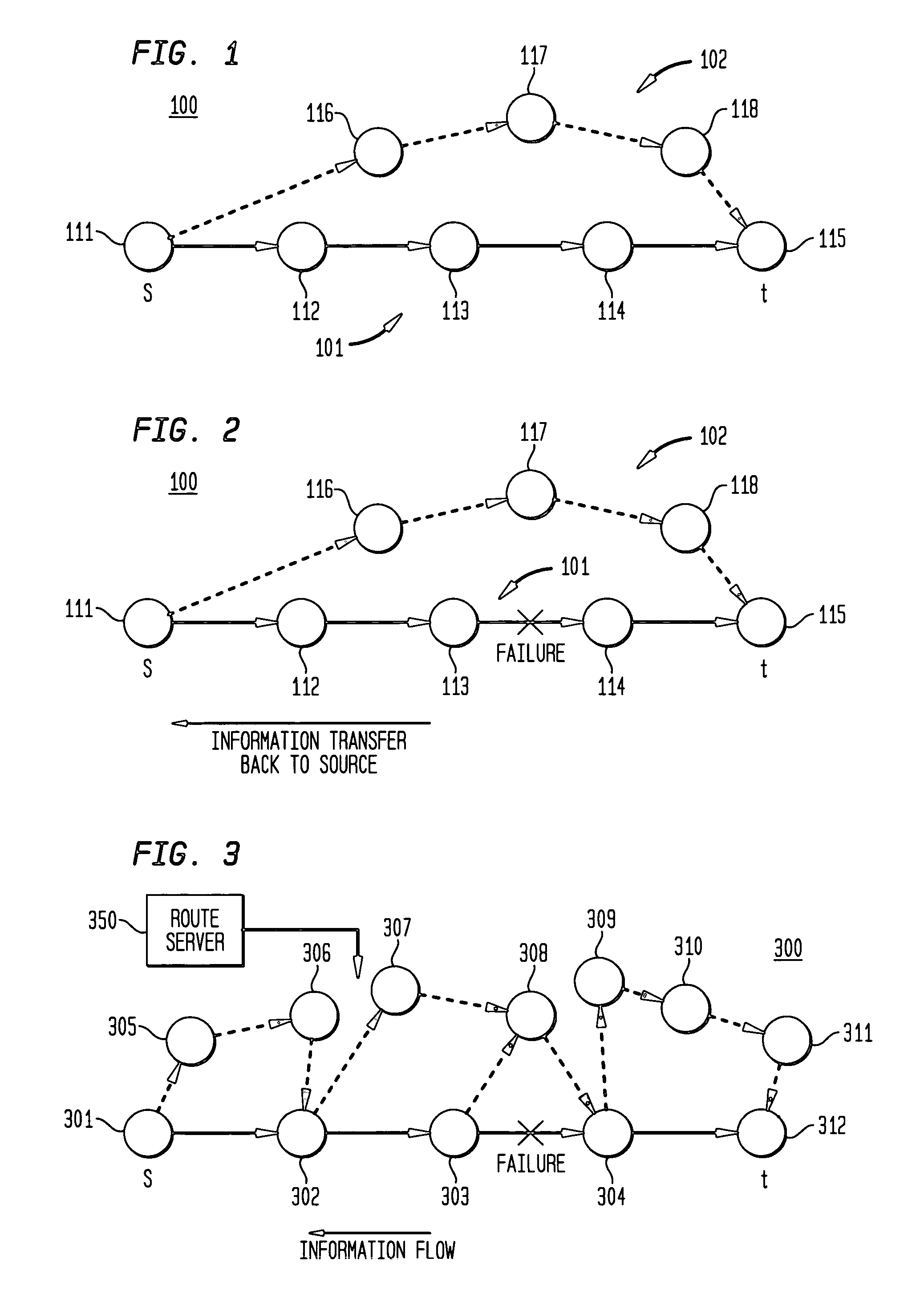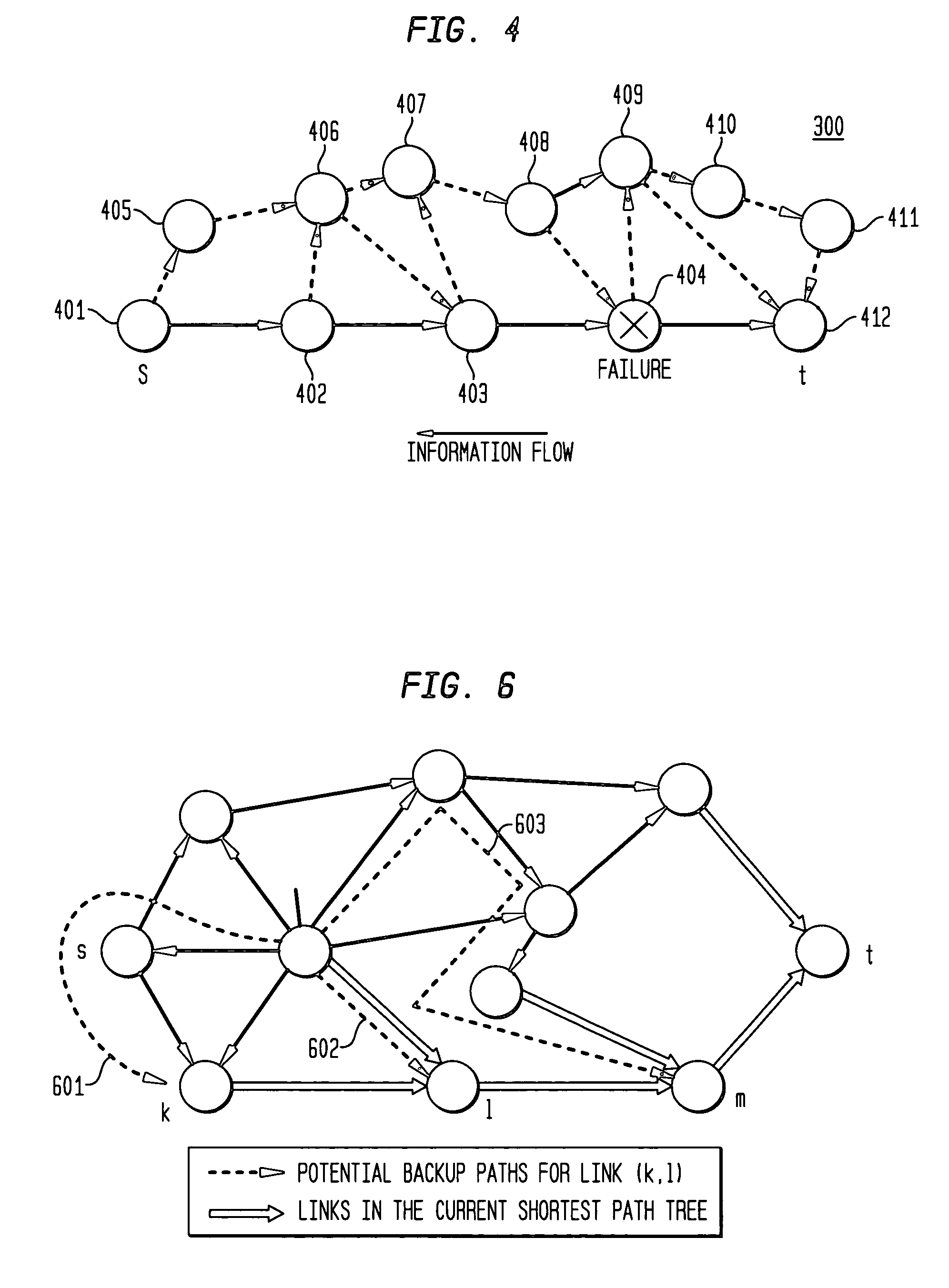Dynamic backup routing of network tunnel paths for local restoration in a packet network
a packet network and tunnel path technology, applied in the field of routing packets in the telecommunications network, can solve the problems of delay, end-to-end restoration may have an unnecessarily long delay before switching from the primary to the secondary path, etc., and achieve the effect of minimizing costs
- Summary
- Abstract
- Description
- Claims
- Application Information
AI Technical Summary
Benefits of technology
Problems solved by technology
Method used
Image
Examples
Embodiment Construction
[0023]In accordance with embodiments of the present invention, dynamic backup routing of a Network Tunnel Path (NTP) allocates an active and backup path to the NTP based upon detection of a network failure. Dynamic backup routing employs local restoration to determine the allocation, and, in operation, to switch between a primary (also termed active) path and a secondary (also termed backup) path. In local restoration, nodes on either end of one or more failed links switch traffic to a backup path. Switching from the active path is based on a backup path determined with iterative shortest-path computations with link weighting based on the cost of using a link to backup a given link for either single-link failure or single element (node or link) failure. Active and Back-up paths generated in accordance with embodiments of the present invention may provide for local restoration with relatively short delay in switching to a backup path.
[0024]In local restoration, when an element (a nod...
PUM
 Login to View More
Login to View More Abstract
Description
Claims
Application Information
 Login to View More
Login to View More - R&D
- Intellectual Property
- Life Sciences
- Materials
- Tech Scout
- Unparalleled Data Quality
- Higher Quality Content
- 60% Fewer Hallucinations
Browse by: Latest US Patents, China's latest patents, Technical Efficacy Thesaurus, Application Domain, Technology Topic, Popular Technical Reports.
© 2025 PatSnap. All rights reserved.Legal|Privacy policy|Modern Slavery Act Transparency Statement|Sitemap|About US| Contact US: help@patsnap.com



